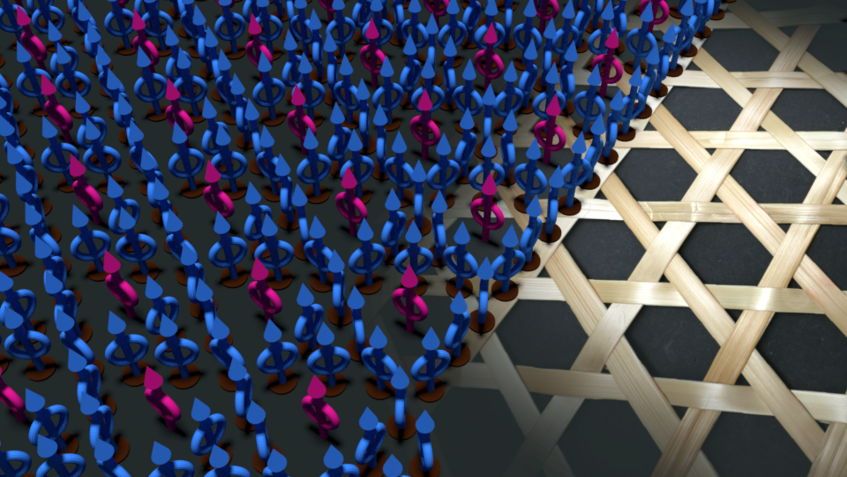From Japanese basket weaving art to nanotechnology with ion beams

© Bernd Aichner, Universität Wien
Title of the project: Vortex dynamics in superconductors with periodic asymmetric pinning potentials
Name of the VDSP student: Bernd Aichner
Project supervised by: Wolfgang Lang
I do my PhD in the Electronic Properties of Materials group and – nomen est omen – I explore and alter the electronic transport properties of high-temperature superconductors. Why I do it, is because I find type-II superconductors fascinating; their ability to carry electrical current without resistance and the quantization of magnetic fields. Latter offers the possibility to manipulate magnetic flux quanta, to tune their size and interaction strength by temperature, to move them by an electrical current, and to fixate or pin them in any desired arrangement by introducing artificial defects into the material. What I find interesting in my work is the possibility to try out different methods to achieve these goals. One such option is to use a helium ion microscope, an instrument that has only recently become available, not only for imaging but also to create artificial defects in thin superconducting films by the incoming helium ions.
The method of irradiating the superconducting films in a helium ion microscope offers to freely choose the position of the defects. In collaboration with the University of Tübingen, we used this to arrange artificial defects in a quasi-kagomé pattern, a pattern known from traditional Japanese basket weaving art. The image illustrates this arrangement and demonstrates how it is populated by magnetic flux quanta (represented by the Greek letter Φ). Their initial reaction is to occupy the stable positions in the defects corresponding to the knots in the basket, which is shown by the blue flux quanta. The possibility to change the interaction strength between the flux quanta and the defects by temperature also gives us the possibility to create a stable arrangement where six flux quanta, which are pinned on the defects, cage a further one in their middle (shown in pink). In this way, the image represents an example of the ability to arrange magnetic flux quanta at will by creating defect patterns. We have successfully demonstrated this for defect distances down to 40 nanometers.
